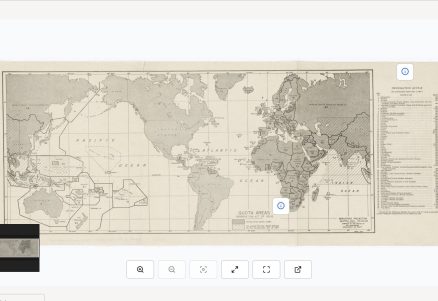
Quota Areas Set by the Immigration Act of 1924
The Great Depression and World War II (1929-1945)
A National Archives Foundation educational resource using primary sources from the National Archives

Published By:
Historical Era:
Thinking Skill:
Bloom’s Taxonomy:
Grade Level:
This activity can be used while studying immigration and late 19th-early 20th century nativism in the United States, during a unit on World War I, or when focusing on the impact of U.S. immigration restrictions on the refugee crisis during World War II.
For grades 7-12. Approximate time needed is 30 minutes. The activity can be done individually or in pairs. Students should have some knowledge of anti-immigrant sentiment and security concerns during World War I.
The focus is a map issued in 1940 to illustrate President Franklin D. Roosevelt’s Proclamation 2283 of April 28, 1938 (repealed by President Harry S. Truman on June 30, 1952) reaffirming quotas from the Immigration Act of 1924.
Ask students to read the introduction and instructions and begin the activity. Their attention will be drawn to the information pins that will prime them to answer the questions in the “When You’re Done” section:
Discuss students’ answers as a class. The following background information may be helpful to explain to students once they have completed the activity:The Immigration Act of 1924 limited immigration to 2 percent of that nationality already living in the United States in 1890, as recorded by census takers. During the 1920s, Congress had enacted laws establishing an annual ceiling for all nationalities and a system for calculating the number of each nationality to be granted entry. They used the 1910 census as the basis for determining how many immigrants from each country would be allowed to enter. The limit for each nationality was 3 percent of that nationality already living in the United States, per the census. The even more restrictive Immigration Act of 1924 established the 1890 census as the new base for determining how many immigrants would be admitted and reduced the percentage admitted to 2 percent.
In this activity, students will analyze a map showing quotas established by the Immigration Act of 1924, also known as the Johnson-Reed Act. They will be prompted to think about which countries were favored and which were barred from entering the United States. Then they will reflect on attitudes toward immigration at the time, and the effect these immigration restrictions had on the demographics and cultural, ethnic, and religious makeup of the United States.
